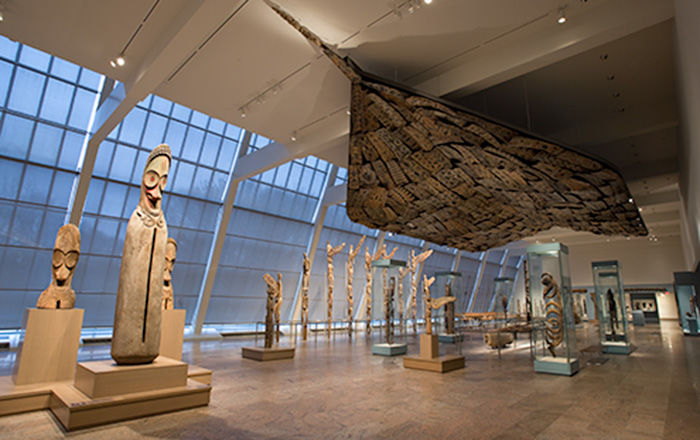Poncho
Not on view
This poncho, a type of male garment constructed from two separately woven panels seamed together, leaving an opening for the head, was likely made in the early twentieth century in Sica Sica, in the Aroma Province in the Department of La Paz, Bolivia. Characteristic of Aymara weavings, the bold composition features stripes of different thicknesses in hues of purple, dark green, gold, brick red, crimson, pink, dark blue, and cream. A green fringe was attached to the perimeter of the garment. Ponchos are an evolution of a type of Precolumbian tunic worn in the southern highlands of Peru, Bolivia, and Chile. Over time, ponchos replaced tunics as the primary woven garment worn by men in the viceregal period.
Ponchos are wider than their ancient counterparts, and, unlike tunics, are not closed at the sides, making them more practical on horseback. Part of a history that extends back thousands of years in the Andes, the present example is a reminder of the vibrant weaving traditions that continue to the present day.
